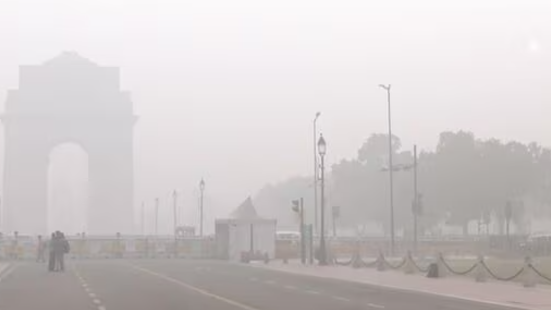

Bhubaneswar: The air over national Capital Delhi still chokes. The Air quality Index has upgraded from Severe Plus to Very Poor grade. AQI is still hovering at over 310 in almost all the 38 places where the air quality is measured. At 4 pm Tuesday, the AQI hovers between 312 and 385 at the 38 measuring stations.
Alas! Delhiites have no respite. The forecast by IMD and IITM shows that the air quality in Delhi will again plunge to severe category. With the northwest wind speed slowing down to 4-6kmph from 8kmpkh, and the mixing depth falling to as low as 1150m in next 48 hours, the ventilation index will only degrade to around 2000m2/s.
As a consequence, the AQI in Delhi will again slip to Severe Plus category from Nov 28.
WHY DELHI CHOKING?
The Union Government in Lok Sabha has recently reasoned that air pollution in Delhi and NCR is a collective result of multiple factors like high level of anthropogenic activities arising from various sectors
It said, “During post-monsoon and winter months, lower temperature, lower mixing heights, inversion conditions and stagnant winds lead to trapping of the pollutants resulting in high pollution in the region. And the Ministry of Environment and Forests added that this is further aggravated due to the emissions from episodic events like
With fire crackers episode over, what is that chocking the Delhi Air?
IS IT STUBBLE BURNING?
Take a look at the stubble burning data (for the period of 15 September to 18 November) released by Union Environment, Forest and Climate Change Ministry.
PUNJAB | HARYANA | UTTAR PRADESH | ||||||||||||||||||
|
|
|
A glance at the above data reveals the following.
HOW STUBBLE BURNING DOWN?
In order to curb the air pollution over Delhi from the episodic stubble burning, the Ministry of Power, as per revised model contract for use of biomass in Thermal Power Plants, has mandated them to use minimum 50% of raw material as stubble/ straw/crop residue of rice paddy sourced from Punjab, Haryana or NCR.
As per last co-firing status available with the Ministry of Power till October, 2024, shows that out of targeted 22.64 LMT for FY 2024-25, 11 TPPS within 300 Km of Delhi co-fired 6.04 LMT till October, 2024 (equal to 28%), compared to 2.58LMT (equal to 14 %) against targeted 18.03 LMT in FY 2023-24.
The above data shows cases of stubble burning can be reduced to ZERO, if the TPPs utilize their full quota of biomass firing.
IS INDUSTRIAL POLLUTION BEHIND?
Thermal power plants (TPPs) are widely known as air spoilers. There are 11 TPPS within 300 km of Delhi. The Union Environment and Forest Ministry disclosed that the emission standards for power plants have been notified and are enforced by State Pollution Control Boards (SPCBs).
The BOTTOMLINE is Delhi air pollution is mainly attributed to Vehicular Pollution, dust from construction and demolition activities and road and open Areas Dust, though stubble burning is also a contributor.